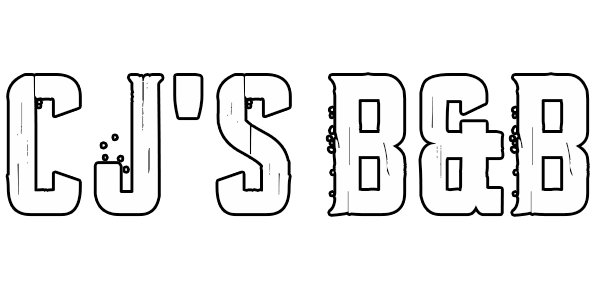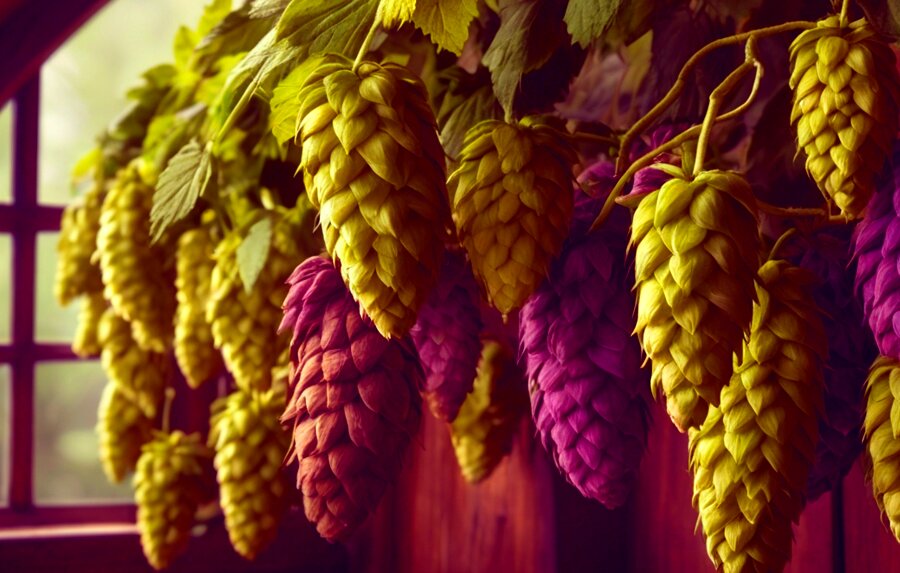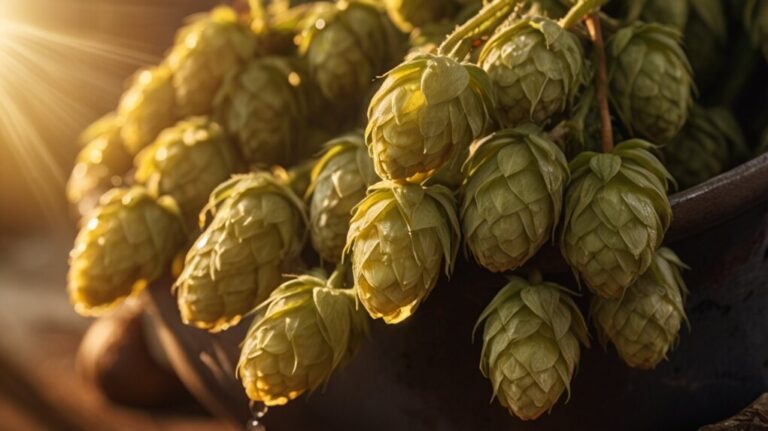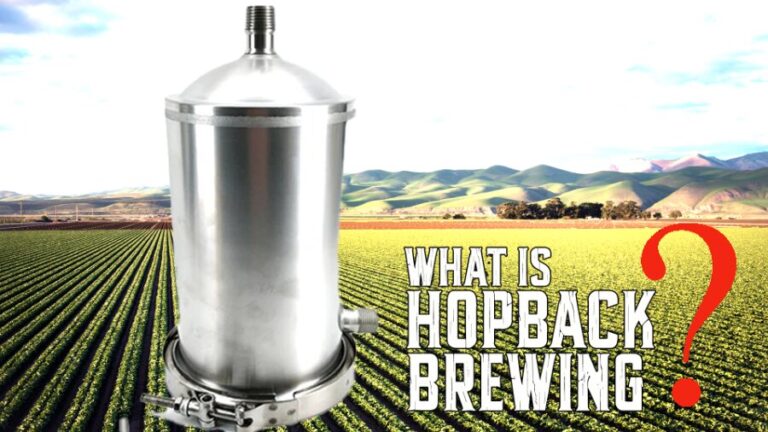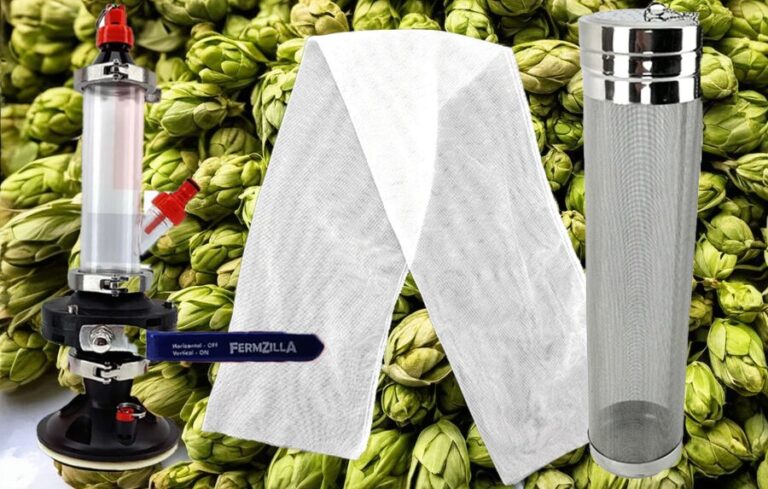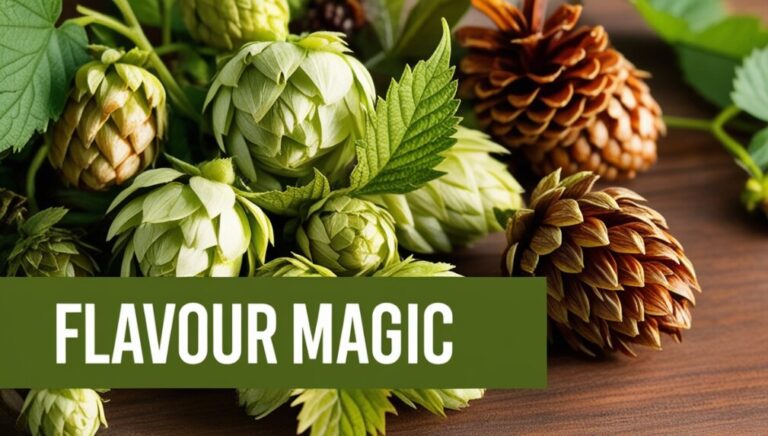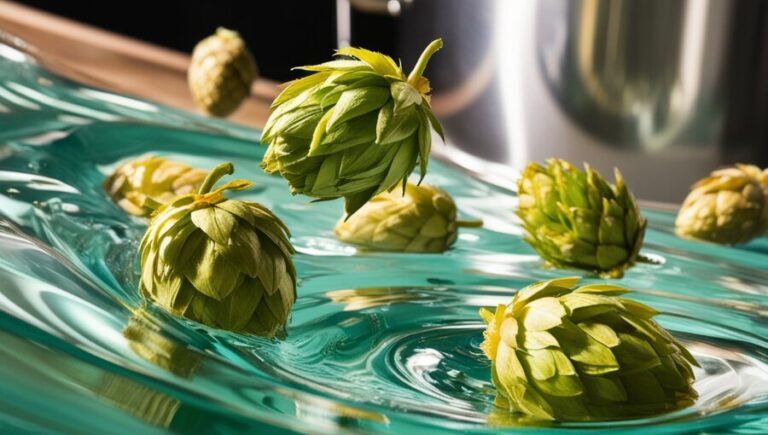Our evaluations and product assessments are conducted using a thorough and unbiased approach. Should you choose to buy any items through our provided links, we might receive a commission Read our disclosures.
Getting the Most Out of Your Hops
Brewing your own beer is like cooking up a storm in your kitchen. One of the key ingredients to nail is hops. They’re the secret sauce that can turn a good beer into a great one. Knowing your hop varieties for flavor and where they come from can make all the difference in your brew.
Know Your Hops
Hops come in two main flavors: bittering and aroma. Bittering hops pack a punch with higher alpha acids, giving your beer that sharp kick. Aroma hops, on the other hand, are all about the smell, loaded with essential oils that make your beer smell heavenly.
Here’s a quick rundown:
| Type of Hop | What They Do | Popular Varieties |
|---|---|---|
| Bittering Hops | High in alpha acids, less smell | Magnum, Northern Brewer |
| Aroma Hops | Full of essential oils, strong smell | Cascade, Centennial, Citra |
Mixing and matching varieties like Cascade, Centennial, and Citra can give your beer a unique twist. Each hop brings its own flavor and aroma to the party.
Where Your Hops Come From
The place where hops are grown can change their flavor and smell. Soil, weather, and farming methods all play a part. For example, hops from the Pacific Northwest in the USA taste different from those grown in Germany.
Check out these regions and their hop flavors:
| Region | Flavor Notes | Famous Hops |
|---|---|---|
| Pacific Northwest (USA) | Fruity and floral | Cascade, Citra |
| Germany | Earthy and spicy | Hallertau, Tettnanger |
| New Zealand | Tropical fruit and citrus | Nelson Sauvin, Motueka |
Knowing where your hops come from helps you pick the right ones for the flavor you want. Try different combos and sources to make your beer stand out (The Growler Guys).
If you want to take your hop game to the next level, check out dry hopping methods and whirlpool hopping techniques. These tricks can boost the aroma and taste of your homebrew.
Types of Hop Characteristics
Getting a grip on hop characteristics can really amp up the flavor and aroma of your homebrew. Hops mainly fall into two camps: bittering hops and aroma hops. Each brings its own magic to the brewing process.
Bittering vs. Aroma Hops
Hops are like the spice rack of brewing, split into two main types: bittering and aroma. Bittering hops pack a punch with higher alpha acids, giving your beer that sharp, bitter edge. Aroma hops, on the other hand, are loaded with essential oils that make your beer smell amazing—think of it as the cologne of your brew.
| Type of Hops | Characteristics |
|---|---|
| Bittering Hops | High in alpha acids; added early to boost bitterness. |
| Aroma Hops | Rich in essential oils; added later for a fragrant finish. |
Tossing hops in early ramps up the bitterness, while adding them later cranks up the aroma. Timing, type, and amount of hops are your main levers here.
Essential Oils in Hops
Essential oils in hops are the secret sauce for flavor and aroma. They can bring everything from floral and herbal notes to zesty citrus or piney vibes. Picking the right hop varieties lets you fine-tune your beer’s flavor profile, adding an artistic touch to your brewing (The Growler Guys).
Bitterness comes from alpha acids released when hops boil. The longer the boil, the more intense the bitterness, depending on the hop variety (The Growler Guys).
To really nail the aroma, you might want to try dry hopping or whirlpool hopping. These methods help you squeeze out every bit of aroma and flavor, making each sip a delight.
By getting to know your hops and using them wisely, you can take your homebrew from good to great.

Popular Hop Varieties for Flavor
When I jump into homebrewing, picking the right hops can totally change the game in flavor and aroma. Among the many options, three really stand out: Cascade, Centennial, and Citra hops.
Cascade Hops
Cascade hops are my go-to for adding a zesty citrus and floral kick to my brews. Born in Oregon, these hops are super versatile and popular in pale ales and IPAs. They bring grapefruit, floral, and even piney notes, making them a hit with homebrewers.
| Characteristic | Description |
|---|---|
| Alpha Acid Range | 4.5% – 6.7% |
| Flavor Notes | Citrus, floral, pine |
| Best Used In | Pale ales, IPAs, and other hop-forward beers |
Cascade hops also shine in aroma, perfect for late additions or dry hopping. For more on how to use these hops, check out my article on dry hopping methods.
Centennial Hops
Centennial hops are like Cascade on steroids. They offer a similar flavor profile but with more punch. These hops provide balanced bitterness with a lovely citrus and floral aroma. They’re great for both bittering and aroma in various beer styles.
| Characteristic | Description |
|---|---|
| Alpha Acid Range | 9% – 11% |
| Flavor Notes | Citrus, floral, earthy |
| Best Used In | IPAs, pale ales, and stouts |
I often mix Centennial hops with other varieties to deepen the flavor in my brews. They pair especially well with Citra hops for a citrus explosion. For more hop combo ideas, check out my tips on homebrew flavour enhancers.
Citra Hops
Citra hops are famous for their bold tropical and citrus flavors, making them a must-have in my brewing toolkit. They can bring tangerine, lime, and even passionfruit notes to your beer, perfect for IPAs and fruit-forward styles.
| Characteristic | Description |
|---|---|
| Alpha Acid Range | 11% – 14% |
| Flavor Notes | Tropical fruit, citrus, grapefruit |
| Best Used In | IPAs, pale ales, and fruit beers |
Citra hops are especially effective in late additions and dry hopping, letting their aromatic qualities shine. I love experimenting with them in my brews. If you want to boost aroma in your homebrew, check out my article on maximizing aroma in homebrew.
Picking the right hops is key to crafting the perfect brew. Cascade, Centennial, and Citra hops each offer unique flavors and aromas that can elevate any homebrew. By understanding their characteristics, you can create beers that are not only tasty but also showcase your personal brewing style.
Making the Most of Hops in Brewing
Brewing your own beer is a blast, and getting the hang of hops can really crank up the flavor and aroma. Here, I’ll share some tips on timing and additives, plus a few brewing tricks to make your beer smell amazing.
Timing and Additives
When you toss hops into the mix matters—a lot. Adding them later in the process pumps up the aroma, while earlier additions ramp up the bitterness. The type, amount, and timing of hops can totally change your beer’s taste (Columbia Distributing).
Check out this quick guide on when to add hops:
| Brewing Stage | Hop Addition | What It Does |
|---|---|---|
| Boil (60 min) | Bittering Hops | Adds bitterness |
| Boil (15-30 min) | Flavor Hops | Adds flavor |
| Boil (0-5 min) | Aroma Hops | Adds aroma |
| Fermentation | Dry Hopping | Boosts aroma |
Don’t forget, the stuff you add—like specialty malts—can tweak the flavor too. Play around with different combos to find your perfect brew.
Brewing Tricks for Aroma
I’ve tried a bunch of ways to make my beer smell great. Here are some tricks that work for me:
Dry Hopping: Toss hops in during fermentation. It’s a killer way to up the aroma without adding bitterness. Check out more on dry hopping methods.
Whirlpool Hopping: Add hops after the boil while the wort’s still hot. This keeps the essential oils from boiling off, so you get all the good smells. Learn more about whirlpool hopping techniques.
Hopback Brewing: Run hot wort through a chamber packed with hops before fermentation. This pulls out intense hop aromas and flavors. Dive into hopback brewing techniques.
Hop Bursting: Dump a bunch of hops in at the end of the boil. This cranks up the aroma while keeping bitterness low. For more on this, visit hop bursting in homebrewing.
Using these tricks, you can seriously boost your beer’s aroma. Each method has its perks, so mix and match to find what you like best. Remember, brewing is all about experimenting and finding what works for you. For more tips on getting the most aroma, check out maximizing aroma in homebrew and see how different hop varieties can take your brewing game to the next level.
Picking the Perfect Hop Varieties for Flavor
When I decided to brew my own beer, choosing the right hops was crucial for getting the best flavor and aroma. Knowing the differences between hop types and where to get them can make a big difference in the final taste. Here, I’ll break down the choice between pellet and fresh hops, and why local hops can be a game-changer.
Pellet vs. Fresh Hops
One of the first choices I face is whether to use pellet hops or fresh hops. Each type has its perks and quirks that can affect my brewing process and the flavors I get.
| Type of Hop | Shelf Life | Flavor Profile | Usage |
|---|---|---|---|
| Pellet Hops | Longer | Consistent and concentrated | Great for bittering and aroma additions |
| Fresh Hops | Shorter | Bright and vibrant flavors | Best for late additions, dry hopping, or whirlpooling |
Many breweries go for pellet hops because they last longer and are consistent (Columbia Distributing). Pellet hops are compressed, so they take up less space and are easier to store and measure.
Fresh hops, though, bring a unique and lively flavor that can really make my beer pop. Their freshness can add special characteristics that dried hops just can’t match. But, they don’t last long and need to be used right after harvest, which can make them harder to get.
Sourcing Local Hops
Getting local hops can really up my homebrew game. It supports local farmers and lets me try out unique hop varieties that aren’t always easy to find. Local hops usually have a shorter trip to my brewing setup, so they’re fresher when I use them.
Using local hops can boost my beer’s flavor, giving it a unique character that reflects the local area. Many local growers offer special blends and experimental varieties that can add something extra to my brews. For more tips on boosting flavor, check out our article on homebrew flavour enhancers.
Plus, using local hops helps me connect with my community and learn more about brewing from others who love it as much as I do. Whether I’m using pellet hops for their ease or fresh hops for their vibrant flavors, the quality and source of my hops are key to making the best homebrew possible.
By understanding the differences between hop types and looking for local options, I can take my brewing to the next level and create flavorful, aromatic beers that really stand out. For more advanced tips, don’t miss our resources on advanced hopping techniques.
New Hops on the Block
Crafting Fresh Flavors
As I get more into homebrewing, I’ve been geeking out over the cool stuff happening in hop breeding. It’s like matchmaking for plants, where breeders mix and match hop plants to create new varieties with killer flavors and aromas. Think citrusy, piney, floral, or spicy notes that can totally transform your beer. But creating a new hop variety isn’t a quickie—it takes years of testing to make sure it hits the mark (Geterbrewed).
Hop breeding has a wild history. Back in the 17th century, folks discovered alpha acids, which led to the rise of American hops like Cascade, Centennial, and Citra—famous for their bold flavors. Nowadays, breeders are all about aroma and flavor, not just bitterness. This shift has given us gems like Amarillo, Simcoe, and Mosaic, which bring tropical, citrus, and piney vibes to the table.
Some of the rockstars from breeding programs, like those at the Slovenian Institute of Hop Research & Brewing, include Fox, Kolibri, Wolf, Cardinal, and Dragon. Each one adds its own twist to beer recipes, making homebrewing even more fun and flavorful (Geterbrewed).
The Bumps in the Road
But hey, it’s not all sunshine and rainbows in hop breeding. One big snag is the time it takes to develop new varieties—plant genetics can be a real wild card. Plus, climate issues can mess with hop growth and yield, making it tough to keep up with the demand for new flavors.
Breeding programs also hit roadblocks when they can’t get their hands on new varieties fast enough, wasting time and resources. This can be a bummer for brewers like me, itching to try out new flavors in our homebrews.
Looking ahead, breeders are getting fancy with techniques like genomic selection to speed things up. They’re also focusing on sustainability, working on pest-resistant varieties that can handle different conditions. The goal? More diverse flavors and aromas to keep us homebrewers happy.
By keeping up with these advancements and challenges, I can make smarter choices about the hops I use and brew beers with even better flavor profiles. Cheers to that!

